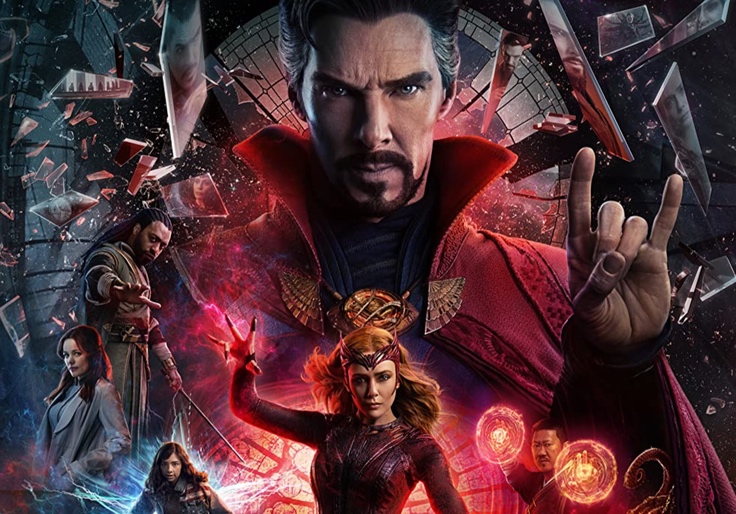The "multiverse" is a terrible science-fiction plot device with its origins in late-night dorm-room pseudo-philosophizing. It was popularized in the 1960s and '70s by comic-book creators, who used it to take their popular characters and freshen them up by placing them in slightly altered versions of the planet Earth. The multiverse is a first cousin to time travel, the other terrible science-fiction device, which allows people to change the present by changing the past or staving off an awful future. The fatal flaw of these tropes is, like the introduction of magic into any plot, that they have no limiting principle. If you violate the basic rules of existence at your plotting convenience, then there are no stakes. Nothing that dies needs to stay dead; nothing that is lost forever cannot be found; no storyline that hits a dead end cannot be poofed into an alleyway leading to a convenient solution.
The superhero shows on the CW Network based on DC Comics—Supergirl, Arrow, The Flash—all began charmingly and then ruined themselves by moving their plots into the multiverse. Eventually there were ludicrous numbers of different versions of each character running around, conveniently solving each other's problems or getting each other into scrapes while we viewers rolled our eyes and said, "Come on."
This unsolvable storytelling problem is a partial subject of the last movie I reviewed here, Everything Everywhere All at Once, in which a character who can travel at will across multiverses becomes a nihilistic monster hungry to destroy existence itself because she has learned that nothing matters.
But people love Everything Everywhere All at Once, which is on its way to being the biggest indie hit in maybe a decade—just as people loved last year's Spider-Man: No Way Home ($800 million at the U.S. box office), in which the multiverse was simply a means of bringing together all three actors who had played the role over the past 20 years and allowing them to meet, become friends, and confront popular villains from the franchise's storied past. What these movies prove is that even a bad plot device can become a delightful one—if the purpose of it is to delight. That's why Back to the Future was such a sensation when it was released in 1985; creators Bob Zemeckis and Bob Gale made the brilliant decision to use time travel as the basis for a slapstick action comedy whose twist is that the present ends up inadvertently changed for the better.
Now comes Dr. Strange in the Multiverse of Madness, which is due to be the biggest hit at the box office since Spider-Man: No Way Home, its fellow Marvel Studios release. And when this movie is delightful, and it is quite a lot, it's transportingly delightful. There are action and fight sequences in this movie that pull off the amazing feat of being both hilarious and unnerving at the same time. Ten minutes in, a giant creature that is part Cyclops and part octopus goes on the attack in New York in an exciting and inventive sequence that is part Godzilla movie, part French Connection. Later on, two Dr. Stranges battle it out using musical notes brought magically to life; the setting is a haunted house, but the fighting tools seem straight out of a Looney Tunes battle between Bugs and Daffy choreographed by Chuck Jones.
The director Sam Raimi made the three Evil Dead movies, those peerless gross-out horror comedies of the 1980s and early '90s, and he tries to bring some of their underground devil-may-care sensibility to Multiverse of Madness. In particular, a zombie character who emerges late in the film directly evokes the famous Evil Dead 2 poster image in which a reanimated skull smiled out at you from the newspaper Arts section. This is the first Marvel movie that tries to deploy horror tropes, but Raimi and producer Kevin Feige are canny enough to know a multibillion-dollar franchise cannot be too scary, and so it isn't.
The movie loses momentum and focus when it defaults to generic Marvel, with mountaintop magical battles and people jumping on and off outer-space jetsam in tiresome sequences we've already seen many times now across the 28 MCU pictures released since 2008. Benedict Cumberbatch is a wonderful actor, but he's so much better playing the arrogance and unlikability of Dr. Strange that he doesn't make a very satisfying universe-saving hero. The only character we really love here is Benedict Wong's Wong (yes, Wong plays Wong), the wisecracking sorcerer we last saw partying up a storm at an after-hours club in San Francisco at the end of Shang-Chi last year.
Oddly, Dr. Strange in the Multiverse of Madness shares with Everything Everywhere All at Once a young female character who can move from universe to universe, but this one is not a suicidal hater; she's a teenager who doesn't know how she does it. She is being pursued for her powers by Wanda the Scarlet Witch, a second-rank Avenger who moved to the forefront when Wandavision went viral as the first Disney Plus Marvel streaming show. Elizabeth Olsen, who played Wanda indifferently in the Avengers movies but heartbreakingly on streaming, here goes full bad guy and proves to be a most formidable and interesting villain. Grief over the death of her husband turned her into a monster in Wandavision; here, the hunger to reunite with the children she magically created to avoid her grief on the streaming show powers her.
All in all, Dr. Strange in the Multiverse of Madness doesn't fall prey to the plot-hole coverups that multiverse tales usually feature. It's good—with absolutely smashing production design by Charles Wood deserving of an Oscar—and sometimes it's more than good. But Marvel should quit while it's ahead before it falls prey to the disastrous turn taken by the DC television shows into true multiversal madness.
